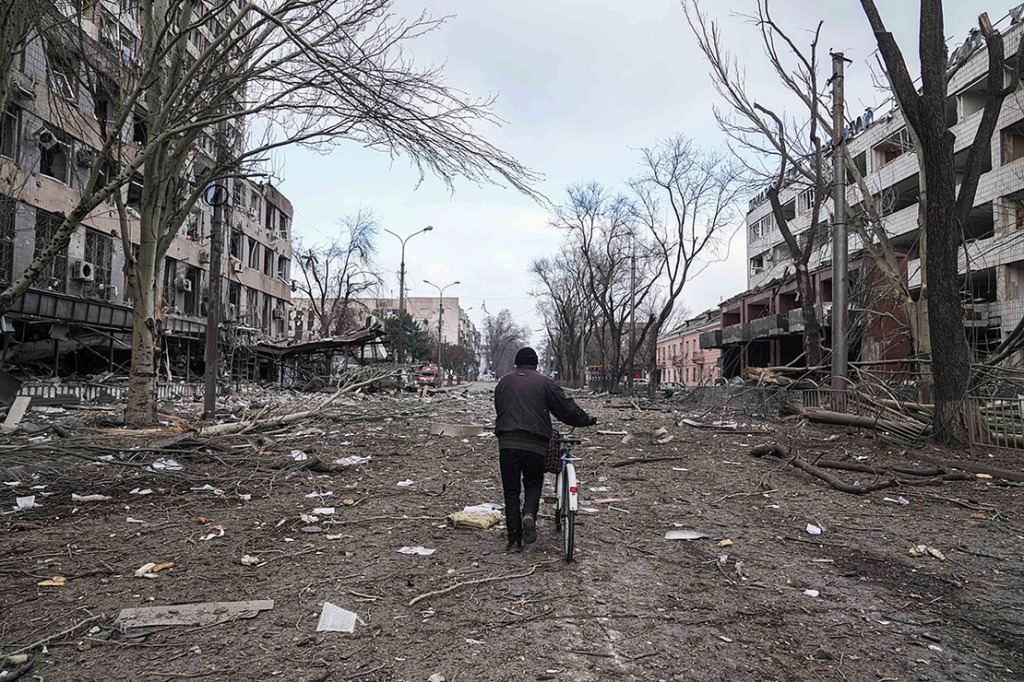We have long identified the major external risks our power sector faces. We have identified them but did little to mitigate them,
In this blog alone I have spoken of these risks multiple times. But as we continue to bear the brunt of geopolitical tensions and the global economic slowdown, perhaps it is time to revisit these risks and reconsider what must be done right now.
I don’t think there’s a need for me to expound on how the Ukraine and Russia war has affected the world. Inflation, a strong dollar, and high fuel prices have been hogging the headlines for months now.
In a post I published last March, I talked about the double threat brought by this war. The effects of the tension in these two countries clearly illustrate how vulnerable the Philippine power sector is to foreign exchange risks and global coal and oil prices.
The war has destabilized the supply chain. As early as March, thermal coal already reached record-high prices.
Russia produces 15 percent of global coal exports, and it is currently at war, thus pushing global prices up.
Consider that average coal prices for 2019 and 2020 were only $69 per metric ton (MT). In contrast, for the first half of 2022, average coal prices were $176 per MT, higher than the $99 per MT in the first six months of 2021.
And global prices are just one of the external risks. The second is the foreign exchange rates.
Much like other currencies, the Philippine Peso has fallen against the US dollar significantly. The US dollar is now at its strongest in the last two decades. And it’s expected to be even stronger as the Federal Reserve continues ratcheting up interest rates to fight inflation.
Emerging economies like the Philippines are hurting by the US dollar’s strength as most of our commodities are indexed in the US dollar. This is the case with us in the local energy sector. We buy coal and oil in US dollars, which means that as the US dollar strengthens, we will need more pesos to buy commodities in US dollars.
So, aside from the higher-priced coal and oil, we will have to shell out more because of the dollar’s strength.
As of now, these are already driving power rates up. The largest distribution utility, Meralco as early as July said that the foreign exchange rate is already driving power rates up.
We might be facing power outages in a few months. Utilities have been challenged by the pandemic due to low collection rates. But with the effects of the row between Russia and Ukraine, utilities no longer have the cash requirements to pay for the coal they import.
Distribution utilities and electric cooperatives have not been spared from the economic consequences of the COVID-19 pandemic. They have been bleeding financially, too.
Unfortunately, the distribution sector’s problems have worsened because of global developments such as the conflict between Russia and Ukraine, and the weakening of the Philippine Peso.
So, how can the government avert a power crisis despite the strong dollar and high global prices?
What the government can do is implement a Consumer relief fund program. Representative Joey Salceda, proposed this program. It’s a stopgap measure meant to address the problem of increasing power costs.
Utilities and consumers need support in paying for their power. Unlike other countries like the United Kingdom that have implemented some subsidy or support scheme to help households and businesses weather the increasing power costs, the Philippines still has none.
This is how Congressman Salceda envisioned it would work.
Let us assume that the pre-Ukraine generation rate rate of a distribution utility is Php5.00 per kilowatt hour (kWh). However, because of the spike in global coal prices, the cost of generation had already increased to around Php11.50/kWh. So, there is a Php6.50/kWh difference between the pre-Ukraine rate and the current cost of generating power.
There is no doubt that consumers cannot pay for this difference all at once. So, what the distribution utilities can do is allow consumers to amortize this difference over five years at an interest rate of 5% per annum. This is a deferred payment scheme where consumers will pay for the current bill/consumption and the monthly deferred payment.
Here is a breakdown of what consumers must pay:
P5.00/kWh for their current bill
P0.12/kWh for deferred payment
So, for their first monthly bill, consumers will pay P5.12/kWh. Likewise, the increase will only be P0.12/kWh per month assuming their monthly consumption remains the same.
But how can utilities and electric cooperatives implement this scheme? This is where banks come in as this measure requires the government to tap the liquidity of the banking sector.
Utilities can be the borrower and for electric cooperatives (ECs), the National Electrification Administration (NEA) can act as a guarantor for them.
The national government must launch this program in at least the next three months. It will require roughly P160 billion, which the Development Bank of the Philippines (DBP) and Landbank of the Philippines (LBP) and local banks can provide. Even if we plan to have it for one year, the banks have enough liquidity to support a revolving fund of up to P800 Billion.
The President may issue an executive order for this measure, which will have to be endorsed by the Joint Congressional Power Commission. While the amortization is not a tariff, the Energy Regulatory Commission must allow the financing portion of this measure to be a line item in the consumers’ utility bill.
The government must step in to alleviate the power rate increase, and an effective way to do this is to implement Congressman Salceda’s proposal.
This, again I must reiterate is a stop-gap measure. As I have been saying for many years now the long-term solution is to veer away from coal and develop indigenous energy sources.
Rather than rely on imported coal and oil, we can take power into our hands with renewables. Doing so will enable us to delink forex and global price risks as we no longer have to import raw materials for energy production.
However, there must be a law that prohibits the indexing of renewable energy generated to global prices. Otherwise, we would be losing our independence and the value of indigenous energy. Linking indigenous energy like geothermal to global prices would be like importing coal and oil. This is simply unjust for the consumers.
The third external risk hounding the Philippine energy sector is natural disasters, which I will discuss in my next blog.







